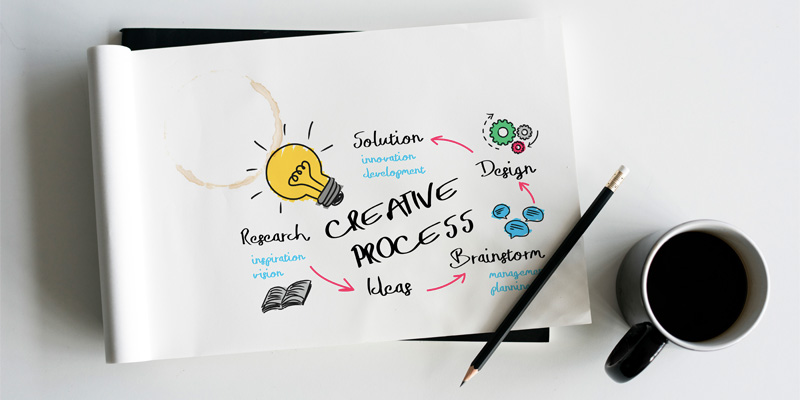The Evolution of Branding: From Logos to Emotional Connections
Imagine walking down a bustling street, your eyes catching the familiar golden arches of McDonald’s. It’s not just a logo you see; it’s a portal to childhood memories of Happy Meals, the comfort of knowing exactly what taste to expect, and the feeling of a quick, friendly service. This evolution from recognizing a mere logo to experiencing a flood of emotions is the essence of modern branding’s journey.
Reading Time: 5 Minutes
1. The Origins of Branding and Logo Design

1.1. Ancient Markets to Digital Marvels
Branding isn’t a new phenomenon. It dates back to ancient times when artisans would mark their goods to signify origin and quality. Fast forward to the 20th century, logos became the cornerstone of corporate identity, a symbol for instant recognition in the burgeoning consumer market.
1.2. Milestones in Design
The journey from simple, straightforward logos to complex visual identities reflects societal changes, technological advancements, and the growing sophistication of consumer psychology.
2. Brand Identity Development: Crafting a Unique Brand Image

2.1. The Blueprint of Brand Identity
Like an architect’s blueprint for a skyscraper, brand identity forms the foundation upon which all marketing efforts are built. It encompasses everything from logo design and color scheme to the tone of voice used in communications.
2.2. Behind the Scenes
Developing a brand identity is akin to storytelling. It’s about weaving elements together to tell a cohesive story about who the brand is, what it stands for, and why it matters in the lives of its consumers.
2.3. Success Stories
Apple’s evolution from a simple apple logo to a symbol of innovation and luxury showcases the power of effective brand identity development.
3. Emotional Branding: Connecting on a Deeper Level

3.1. The Heart of Branding
Emotional branding goes beyond the surface, tapping into the consumer’s desires, hopes, and fears. It’s about creating a brand so relatable that it feels like a trusted friend or a comforting presence.
3.2. The Science of Connection
Psychological principles play a crucial role in this strategy. For instance, using Maslow’s hierarchy of needs, brands can position themselves as essential to the consumer’s self-actualization journey.
3.3. Tales that Bind
Coca-Cola’s “Share a Coke” campaign is a prime example of emotional branding done right, transforming a simple drink into a symbol of friendship and connection.
4. Brand Connection Strategies: Engaging the Modern Consumer

4.1. Building Bridges
In the digital era, brand connection strategies involve creating multiple touchpoints with consumers, from social media interactions to personalized email marketing, ensuring the brand remains a constant, comforting presence in their lives.
4.2. Social Savvy
Leveraging social media isn’t just about posting content; it’s about creating conversations, fostering community, and building a brand personality that’s approachable and engaging.
4.3. Real-World Champions
Nike’s consistent message of empowerment and perseverance resonates deeply with consumers, turning customers into loyal fans and advocates.
5. Measuring the Impact of Emotional Connections

5.1. The Proof is in the Pudding
Assessing the strength of brand connections involves looking at engagement rates, customer loyalty metrics, and direct feedback. It’s about understanding not just if consumers recognize the brand, but if they feel a bond with it.
5.2. Loyal by Design
A strong emotional connection can transform a one-time buyer into a lifelong customer, highlighting the importance of investing in these strategies for long-term success.
6. The Future of Branding: Trends and Predictions

6.1. Looking Ahead
The future of branding lies in the seamless integration of technology and personalization, with AI and machine learning offering new ways to understand and connect with consumers on an individual level.
6.2. The Next Chapter
As we move forward, brands that succeed will be those that can humanize their digital efforts, creating not just personalized experiences but genuinely meaningful interactions.
7. Frequently Asked Questions

7.1. How has the concept of a brand changed over time?
From mere markers of origin and quality, brands have become vessels of emotional and psychological significance in the lives of consumers.
7.2. Why is emotional connection more important than ever in branding?
In a world saturated with options, emotional connections offer a way for brands to stand out, not just through their products or services but through the feelings they evoke in their customers.
7.3. What are the key components of effective brand identity development?
A cohesive visual identity, a compelling narrative, and a consistent tone of voice are key to developing a brand identity that resonates with consumers.
7.4. How can small businesses apply emotional branding on a budget?
Focusing on storytelling, genuine customer engagement, and leveraging social media platforms can enable small businesses to build strong emotional connections without a hefty price tag.
7.5. Can emotional branding strategies backfire? How to mitigate risks?
Authenticity is crucial in emotional branding. Strategies can backfire if consumers perceive them as manipulative or insincere. Staying true to the brand’s values and mission is essential to mitigate these risks.
8. Conclusion
The evolution from logos to emotional connections marks a significant shift in the world of branding. It’s a journey from visual symbols to the heartstrings of consumers, from recognition to loyalty and love. In this era, brand connection strategies and brand identity development are not just about standing out; they’re about standing close, creating relationships that endure beyond the purchase. As we look to the future, the brands that continue to thrive will be those that understand the power of emotion in connecting with their audience, turning every interaction into an opportunity for engagement and every customer into a brand ambassador.
Stay Updated with Creative Design Trends!
Don’t miss the latest in creative design. Subscribe now!